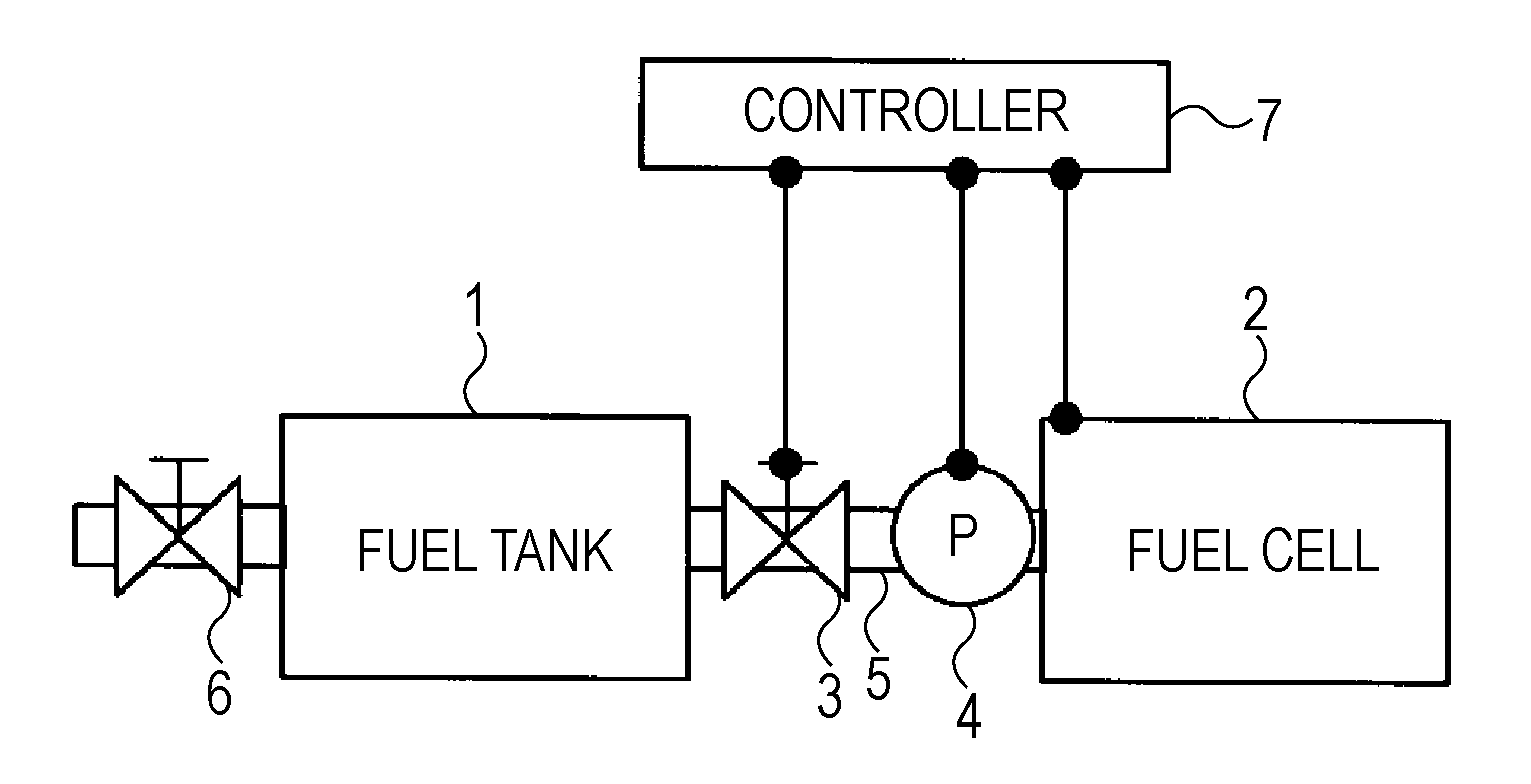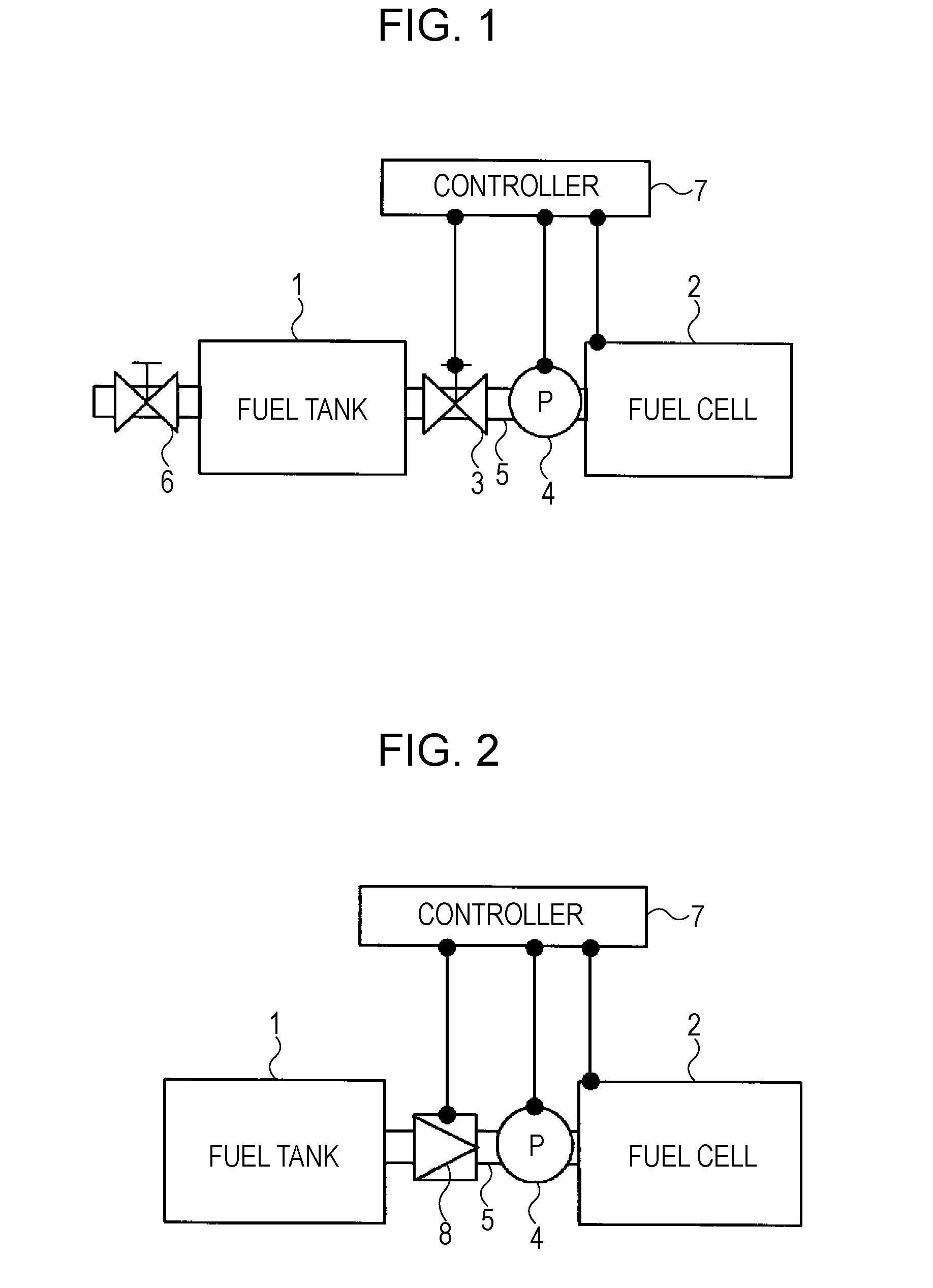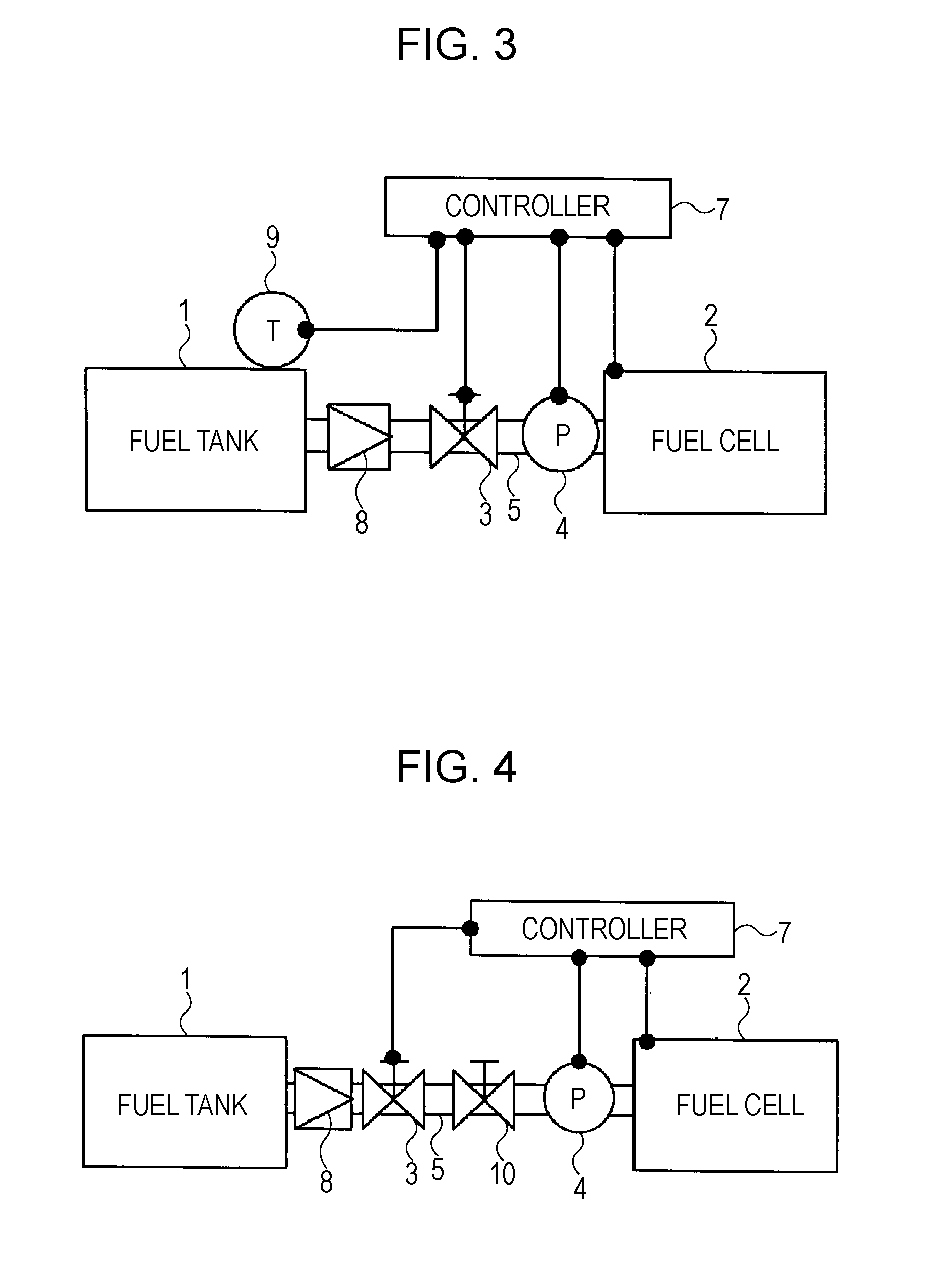Method for judging system condition in fuel cell system
a fuel cell and system condition technology, applied in the direction of fuel cells, reactant parameter control, electrical apparatus, etc., can solve the problems of reducing the power generation performance, and reducing the residual fuel amount. , to achieve the effect of rapid judging abnormalities, reducing the residual fuel amount, and reducing the size and cost of the system
- Summary
- Abstract
- Description
- Claims
- Application Information
AI Technical Summary
Benefits of technology
Problems solved by technology
Method used
Image
Examples
first embodiment
[0094]In a first configuration example of a fuel cell system according to the first embodiment of the present invention, a cutoff vale is provided as a fuel cutoff device in a fuel flow path.
[0095]In this embodiment, a method for judging system conditions in a fuel cell system is applied. The fuel cell system includes a fuel cutoff device provided in a fuel flow path for supplying fuel to a fuel cell from a fuel tank, a pressure detecting device provided downstream of the fuel cutoff device, and a pressure condition judging device for judging a pressure condition on the basis of information provided by the pressure detecting device.
[0096]FIG. 1 illustrates the first configuration example of the fuel cell system according to the first embodiment of the present invention.
[0097]In FIG. 1, reference numeral 1 denotes a fuel tank, reference numeral 2 denotes a fuel cell, reference numeral 3 denotes a cutoff value (a fuel cutoff device), reference numeral 4 denotes a pressure sensor (pres...
second embodiment
[0161]Next, a second embodiment of the present invention is described below. FIG. 9 shows a first configuration example of this embodiment. In FIG. 9, reference numeral 11 denotes a purge valve (fuel discharge valve). Reference numeral 12 denotes a discharge port. As described in the first embodiment, in this embodiment, a connector, a control valve, and a temperature sensor may be provided. The purge valve (fuel discharge valve) 11 is disposed at the flow path outlet of a fuel cell 2 and is usually closed during power generation. When impurities, such as nitrogen and water vapor, accumulate in the fuel flow path during power generation, a purge operation, i.e., opening and closing of the purge valve 11, is performed for discharging the impurities through the discharge port 12. However, as shown in FIG. 10A, when the pressure measured by the pressure sensor is lower than predetermined pressure PP, the purge operation is prohibited. This is because when the pressure in the fuel flow ...
third embodiment
[0171]Next, a third embodiment of the present invention is described. The configuration of a fuel cell system according to this embodiment is the same as in the second embodiment. In this embodiment, a purge valve (fuel discharge valve) 11 is opened for replacing air in a fuel flow path with the fuel at the start of the operation of a fuel cell. In particular, in order to prevent excessive pressure from being applied to the flow path, the purge valve 11 is first opened after the start. Then, the supply of the fuel is started. After inner air is sufficiently exhausted, the purge valve 11 is closed and power generation is started. In this case, changes in pressure measured by a pressure sensor 4 are substantially as shown in FIG. 18. In other words, when a sufficient amount of fuel is present, the pressures changes in two steps, i.e., a step of approaching the stationary pressure in purging when the purge valve 11 is opened (tp) and then a step of approaching the supply pressure of th...
PUM
| Property | Measurement | Unit |
|---|---|---|
| diameter | aaaaa | aaaaa |
| pressure | aaaaa | aaaaa |
| pressure | aaaaa | aaaaa |
Abstract
Description
Claims
Application Information
 Login to View More
Login to View More - R&D
- Intellectual Property
- Life Sciences
- Materials
- Tech Scout
- Unparalleled Data Quality
- Higher Quality Content
- 60% Fewer Hallucinations
Browse by: Latest US Patents, China's latest patents, Technical Efficacy Thesaurus, Application Domain, Technology Topic, Popular Technical Reports.
© 2025 PatSnap. All rights reserved.Legal|Privacy policy|Modern Slavery Act Transparency Statement|Sitemap|About US| Contact US: help@patsnap.com



